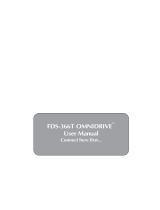
Vi000 User Manual Supplement
1.1 : BSS DPR 901ii DEQ
INPUT CHANNEL > BSS DPR 901 ii DEQ
DEQ Sidechain Solo (SC Solo)
Listen to just the DEQ sidechain via the Solo buss / monitoring system..
DEQ Q / Bandwidth
Adjust the Q or Bandwidth of the lter.
The Q control can be selected between Q-factor and Bandwidth in Octaves, using a setting in the Menu-Settings
page (see section 16.9).
DEQ Compression / Expansion
Adjust the compression / expansion amount for this DEQ band.
When the threshold has been crossed (EQ band activated) this band will either compress (cut) or expand (boost)
the selected band, according to time constants, up to the amount set by this control.
DEQ Release Fast / Slow
Set the release time for this band.
When the band is deactivated, the compression or expansion will reduce over the Release time period, back to
zero compression or expansion. A fast Release means that the signal will return to normal faster.
DEQ Above/Below Threshold
Choose the active ‘polarity’ of this DEQ band.
If this parameter is set to ‘ABOVE’ the band will become active (compression / expansion triggered) when the
sidechain signal rises above the threshold. If this parameter is set to ‘BELOW’ the band will become active when
the sidechain signal falls below the threshold. Choose ABOVE mode to deal with problems that only become
apparent at high signal levels, and BELOW mode to deal with problems at low levels.
DEQ Threshold
Set a threshold level for this DEQ band.
The threshold is the level at which this DEQ band will become active or inactive, depending on the
ABOVE/BELOW parameter. The Threshold meter indicates when the signal crosses the threshold by changing col-
our to red, assisting adjustment of correct threshold setting.








